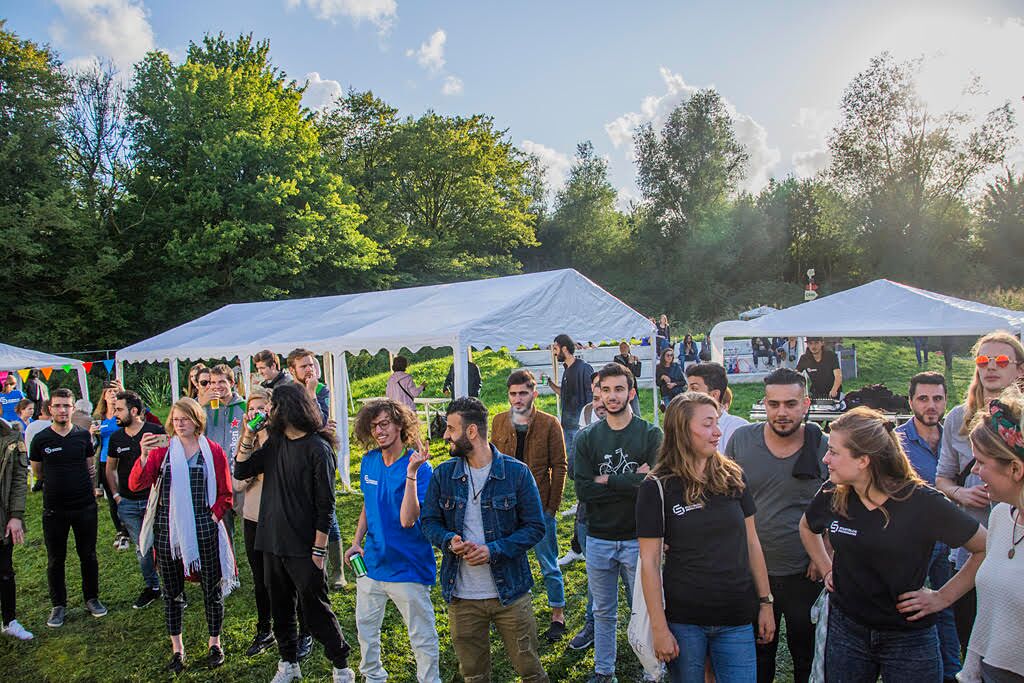 Garden Party - © Startblock
Garden Party - © Startblock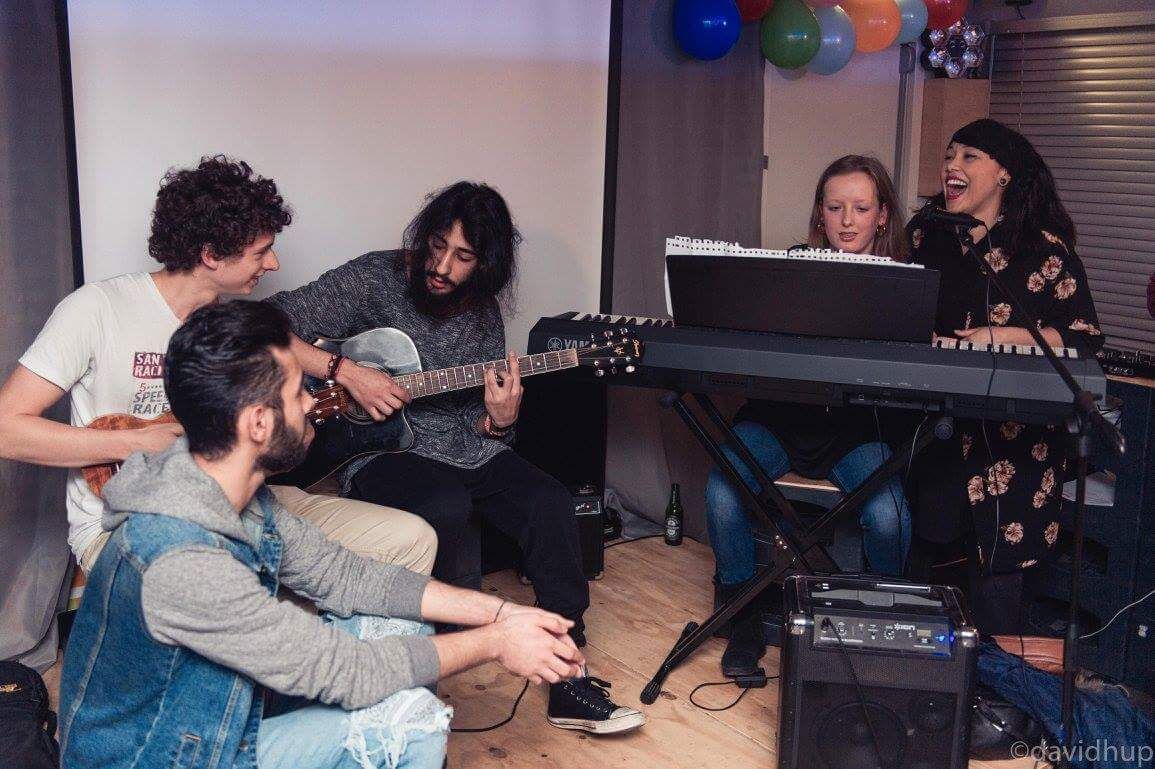 Jam Session - © Startblock
Jam Session - © Startblock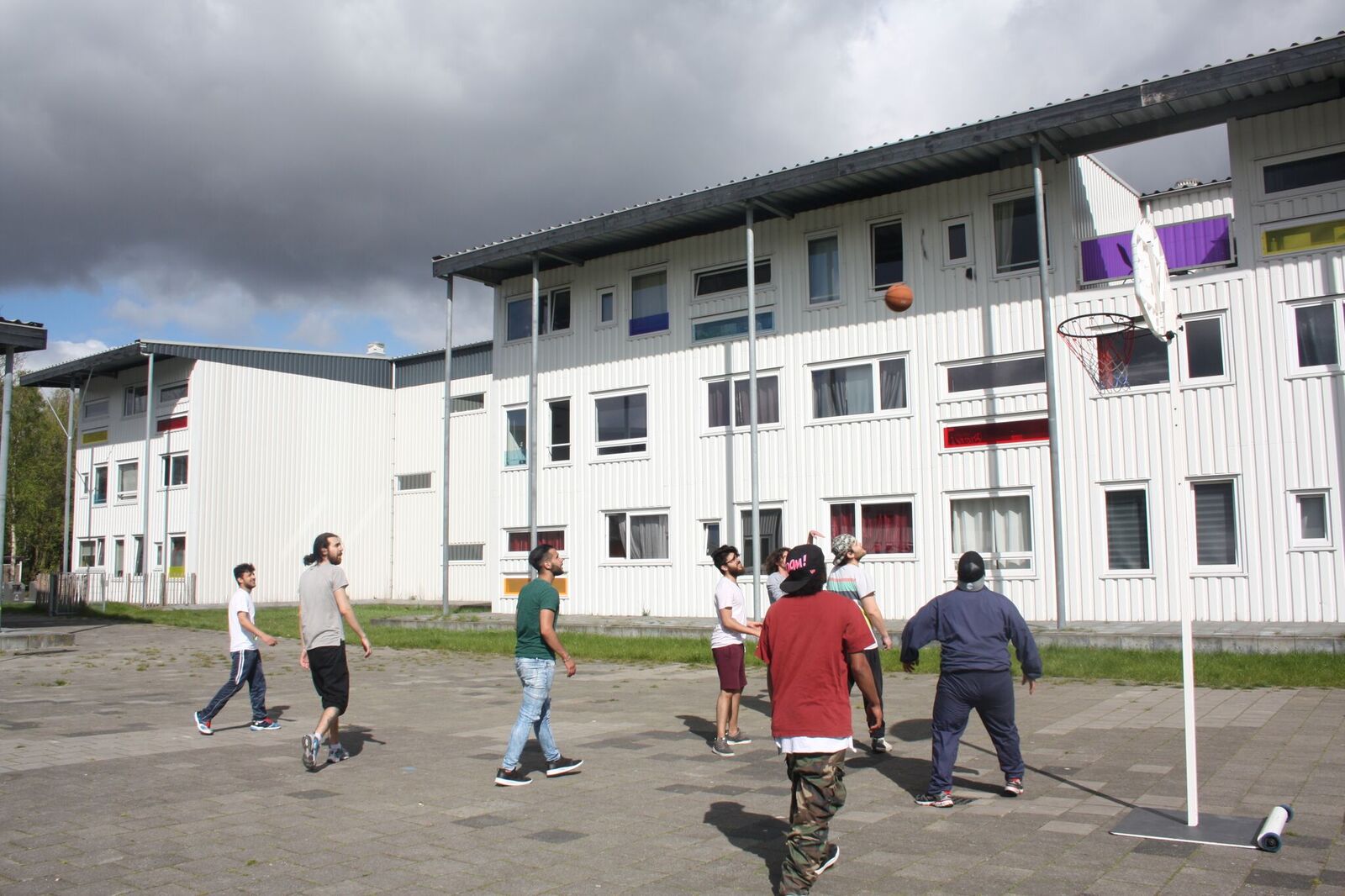 Startblock Sport - © Startblock
Startblock Sport - © Startblock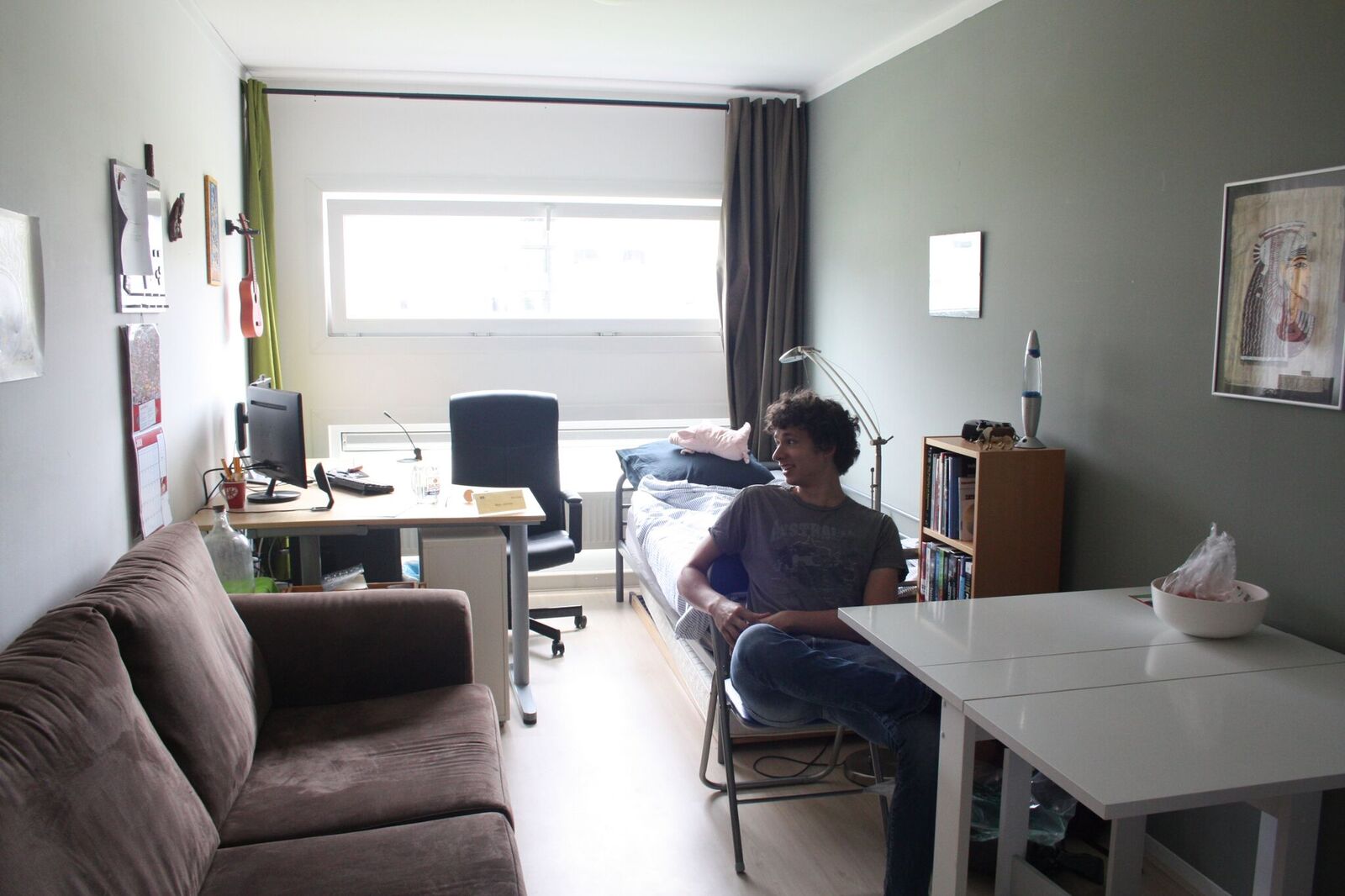 Studio Startblock - © Startblock
Studio Startblock - © Startblock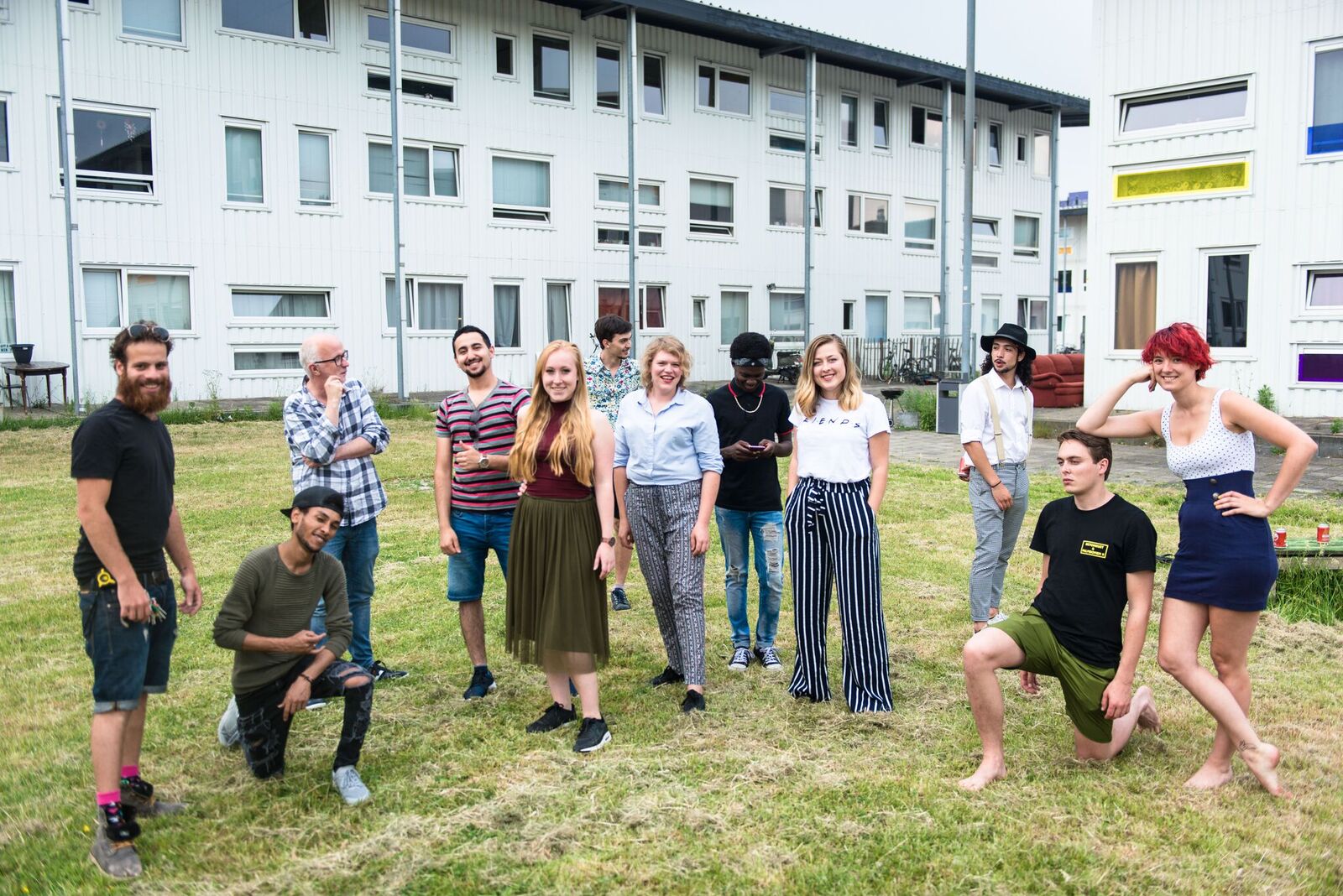 The Self-Management Team - © Startblock
The Self-Management Team - © Startblock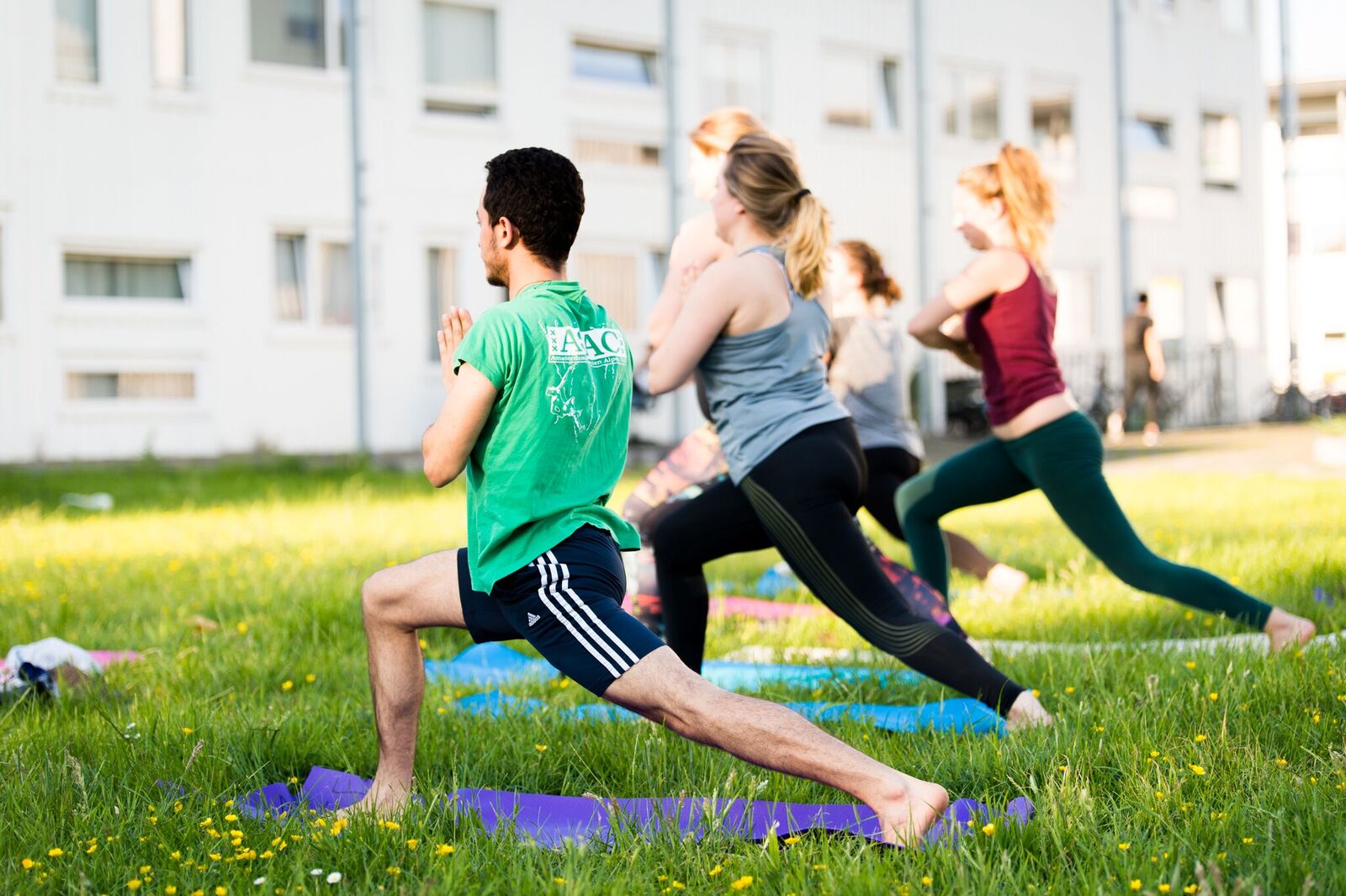 Yoga at Startblock - © Startblock
Yoga at Startblock - © Startblock
City
Amsterdam
Main actors
City Government, National Government, Community / Citizen Group
Project area
Inner City
Duration
Ongoing since 2015
Bringing young people and refugees together through housing
In 2015, the housing association, De Key, had a large number of modular housing units located within disused shipping containers from a previous development project. The Municipality of Amsterdam granted them access to use a former sports ground to house these containers/units and establish a temporary residential community, Startblok Riekerhaven.
Startblok Riekerhaven is home to 565 young people, all between the ages of 18-27, in Amsterdam. Half the residents are Dutch and half are refugees who have recently received their residence permit (status-holders). There are 463 studios and 102 private rooms in multi-person apartments. The studios are approximately 23 square metres and have their own small kitchen and bathroom. All living spaces are provided unfurnished. Each floor has a communal living space for social activities and there are two large outside areas.
Startblok opened in July 2016 with a focus on social integration combine with affordable housing. The project will cease in its current form in 2026 - the shipping containers are second-hand and are not expected to last beyond this time period. Additionally, the municipality's lease of the land will expire, and it has already been purchased privately.
World Habitat Awards
This project was shortlisted for the 'World Habitat Awards' in 2018 in the following category: Special Mention.
In 2015, The Netherlands agreed to accept 7,000 asylum seekers of the 120,000 that Europe promised to house over a two-year period. Initially, the Municipality of Amsterdam wanted to create Startblok solely to house refugees. However, the department of the Amsterdam Nieuw-West borough of the city highlighted there was also a need for rooms for young Dutch people. It is very difficult for young people to find an affordable home in Amsterdam, as rent levels are among the highest in Europe. This prevents many young people from moving there to study or work. It also leads to many local young people living with parents for much longer than desired. The Municipality of Amsterdam decided to include both groups of people in housing need to address these issues.
Objectives:
The main purpose of the project is to provide affordable rented homes for young people in Amsterdam. By having a mix of Dutch people and refugees, Startblok provides an environment for cultural exchange and integration between young people of different backgrounds.
It is also an opportunity for young people to be part of a community with the chance to socialise, whilst allowing them their own space and independence. It provides housing for young people in the city of Amsterdam, where otherwise it is very difficult to find an affordable tenancy.
Dutch residents are selected through an assessment process. Firstly, people sign on to the waiting list through the website. Each potential resident has to attend an information meeting, where the management team gives a presentation and a tour. After this meeting, people who want to join Startblok have to write a ‘motivation letter’ explaining why. The management team are looking for a diverse group of residents and for people to be involved in the social and cultural aspects of the project. They select residents based on this, as well as the vulnerability of the person. They also look for people who are willing to commit as a long-term member of the Startblok community. The maximum tenancy is five years.
When someone moves out, they try to fill the space with someone of a similar profile (gender, age, educational level). This is to ensure the balance and diversity of the apartments stays the same.
The Central Agency for the Reception of Asylum Seekers (COA) are responsible for selecting residents who are refugees. COA provide counselling to refugees during their stay at Startblok and also follow-up on their integration.
Refugees who are staying at Asylum Seekers’ Centers (AZC) in Amsterdam or elsewhere in the Netherlands have to be selected by the Municipality of Amsterdam.
Status-holders who already have a residence in the Netherlands (not in the AZC) can apply by subscribing to the waiting list in the same way as those from the Netherlands.
Amongst Dutch residents, it is half male and half female. There are more male status-holder residents. Men and women are not allowed to share apartments.
Residents organise and manage everything themselves. They maintain the common areas and green spaces and organise social activities. Each hallway has two group managers (a status-holder and a Dutch citizen), who take care of health and safety and cleanliness. Residents decide how to decorate the common areas.
Group managers are in turn managed by social managers. These are part of the overall management team and resolve any issues in the first instance. There is a telephone number for residents to call to explain any problem. The social managers meet weekly with the project co-ordinator (who is in charge of the management team) to discuss what is happening within the project. They also have monthly consultations with other groups such as the Refugee Council and the police to address any further issues.
Residents can apply to be part of the management team or the foundation when a vacancy opens up. Job interviews are held, and the most suitable applicant is hired.
VluchtelingenWerk Nederland (Dutch Refugee Council) are involved in developing the project and offering support to residents who are refugees.
Kamers met Kansen (Rooms with Opportunities), an organisation working with young people at risk of not completing their basic education, works with 15 residents at Startblok. They support them to develop skills to become more independent.
The local primary school allows the use of their sports ground every Wednesday afternoon, where Startblok residents play volleyball.
De Key provides counselling and follow-up with residents.
At the moment there is no definite follow-up support for people moving on, but the Municipality of Amsterdam and the Dutch Refugee Council are making plans for this, especially for status-holders.
The project is funded by the national government and managed by the Municipality of Amsterdam.
The biggest expense was to move the container units to the site. Socius Wonen, De Key and the Municipality of Amsterdam all paid a share in setting up Startblok.
De Key funded €500 (USD$585) per shared living room to cover decorating costs.
Tenants pay between €400-€500 (USD$468-$585) per month. The rent is paid to De Key. If rent is unpaid for three months, De Key contacts residents to find out the reason and helps them look for a solution.
Student housing in Amsterdam costs between €375-€800 (USD$437-$932), depending on the size and location. Therefore, for the size of the rooms, rent is below the market price.
There are 50 hallway managers who receive a discount on their monthly rent of €50 (USD$58). As part of the rent everybody pays €1 (USD$1.17) to De Key, which is used for activities at Startblok. Initially, Socius Wonen paid the managers, but from July 2018 De Key took over this role.
Service costs are included in the rent, which also covers the rental discount of the hallway managers.
If a resident consistently does not take their turn in cleaning the common room or is excessively noisy, a manager can issue them a fine. This starts at €5 (USD$6) and can be increased if they do not change their behaviour.
There are some maintenance costs for the gardens and the clubhouse.
A large number of people living in Startblok receive a government subsidy, and the amount is dependent on income and age. In the Netherlands, subsidies are only available to people between 18 and 23 if their housing meets specific conditions. As the Startblok studios meet these conditions, eligible residents are able to apply for rental allowance.
Environmental impact
Startblok is made up of old shipping containers which would otherwise have been discarded. It has transformed a disused empty plot of land into a vibrant residential community.
Social impact
Startblok promotes a young community based on integration and cooperation. Previously, the neighbourhood was predominantly elderly people and neighbours expressed their concern about a new young community moving in. This created conversations between different groups, which helped change opinions.
The project treats young people - whether they are Dutch or refugees - equally. Startblok encourages all residents to play an active role in society, regardless of their background.
Residents learn to live together with people of different nationalities, with different food, culture, language and customs. Refugees are supported to live in a new city and develop friendships with local people. Taking part in organising events provides an opportunity to learn new skills in problem solving and working with others.
Activities on offer to residents include language courses, sports teams and cultural exchanges. Residents take care of, and learn from, each other. They are also expected to participate in the community by organising or joining in with events.
By ensuring a 50/50 mix of Dutch citizens and refugees, there is always a Dutch neighbour available for people with language barriers. They can help with translations, 5 making phone-calls, assisting with homework and answering questions about the city.
Living in a community with other young people provides an opportunity to meet like-minded people. Residents with similar interests have joined together to form bands and hold community events.
The central government in the Netherlands plans to make vacant government buildings (like offices and barracks) available to municipalities for housing residence permit holders. The measure is intended to ease the pressure on existing social housing. Startblok is a result of this approach.
Startblok intends to carry out research through talking with residents and organising brainstorming sessions. They want to offer workshops and training for residents in areas such as job interview planning, finding employment, finding accommodation in the future and housing legislation.
Some residents moved to Startblok for purely financial reasons, and do not take part in social activities. Some have been unable to integrate due to past traumatic experiences and difficult backgrounds, and so have chosen to mix only with people from similar countries. Startblok encourages but does not force integration.
Not all refugees are able to learn languages and make new friends as fast as others. Dutch residents may have busy lives with jobs, meaning they have less time to spend helping refugee residents. This can lead to disconnection and misunderstandings between people.
There is, however, a conscious effort to explore new activities where everybody can participate. These have included movie nights, exercise classes, parties and painting classes. They are also trying different communication channels to try to reach as many people as possible.
By combining the use of empty containers with disused space, Startblok has created an affordable option for two groups of young people who struggle to access housing in the city of Amsterdam.
Everyone has shared responsibility to make the project work, and it depends on the will of residents to participate and integrate with each other.
This is also a successful example of co-operation between different agencies combining their efforts.
This project addresses the needs of people with language barriers and cultural challenges in a positive way, by encouraging shared exchange of knowledge and ideas. The cultural diversity that refugees bring to the city is celebrated and recognised as an opportunity.
On Map
The Map will be displayed after accepting cookie policy
